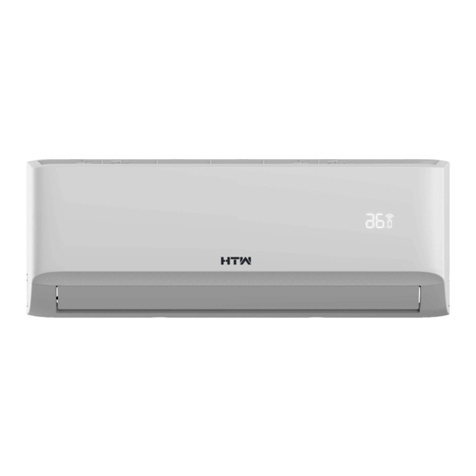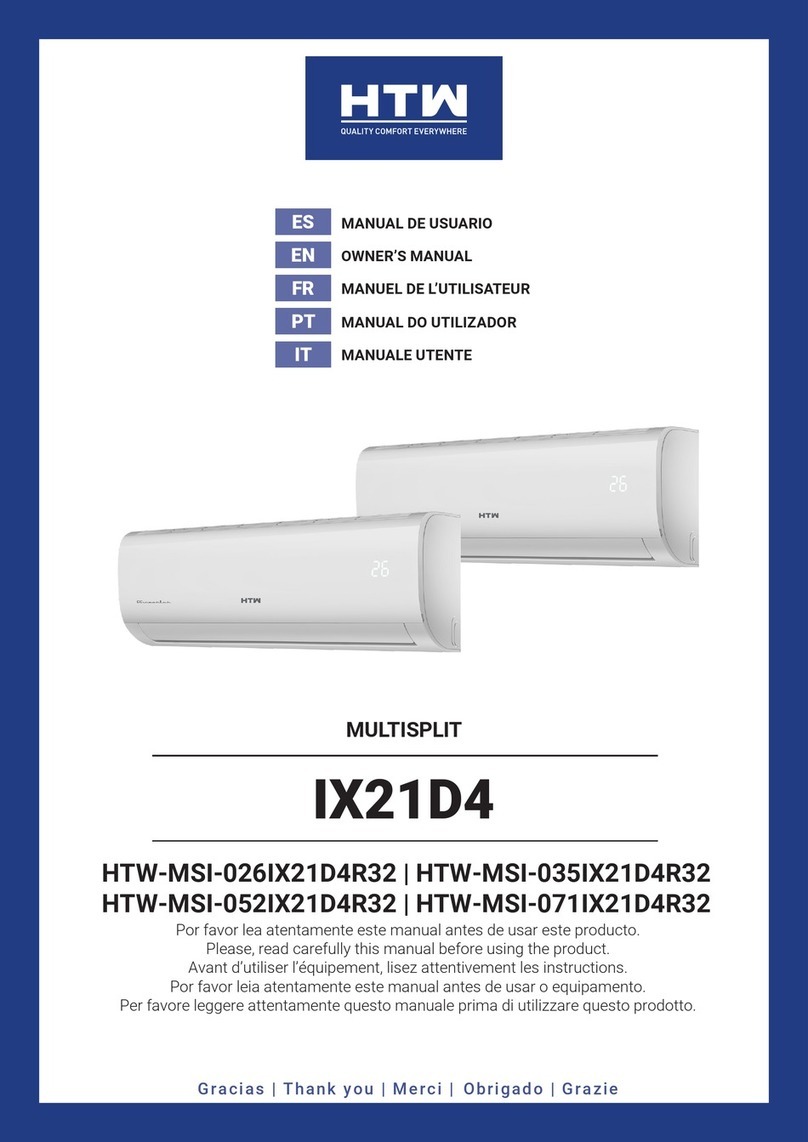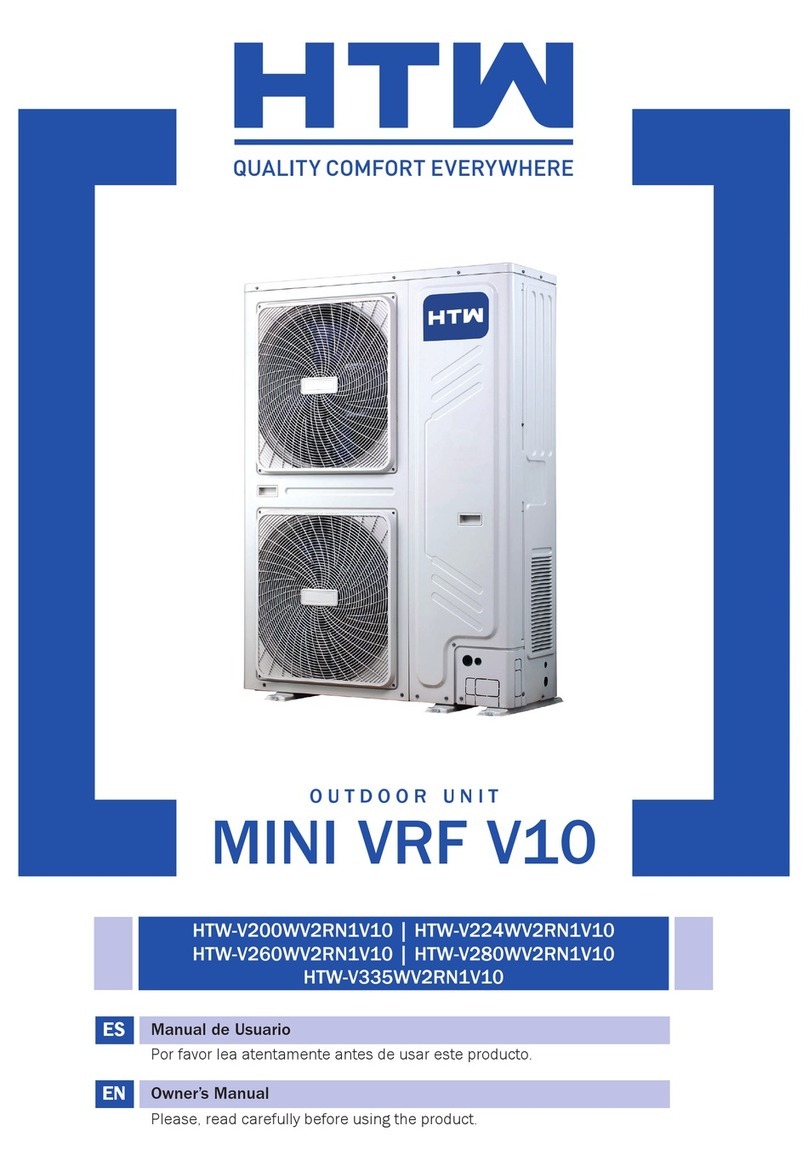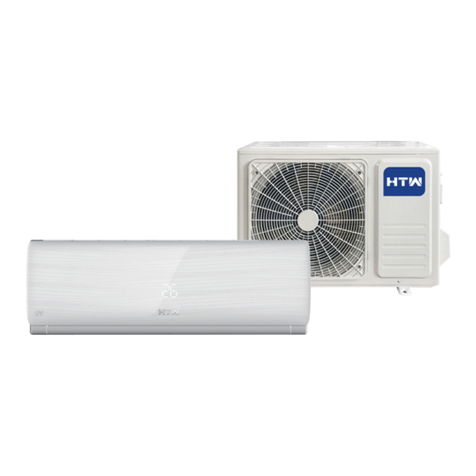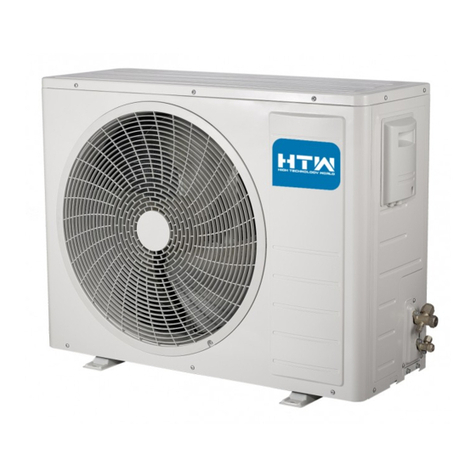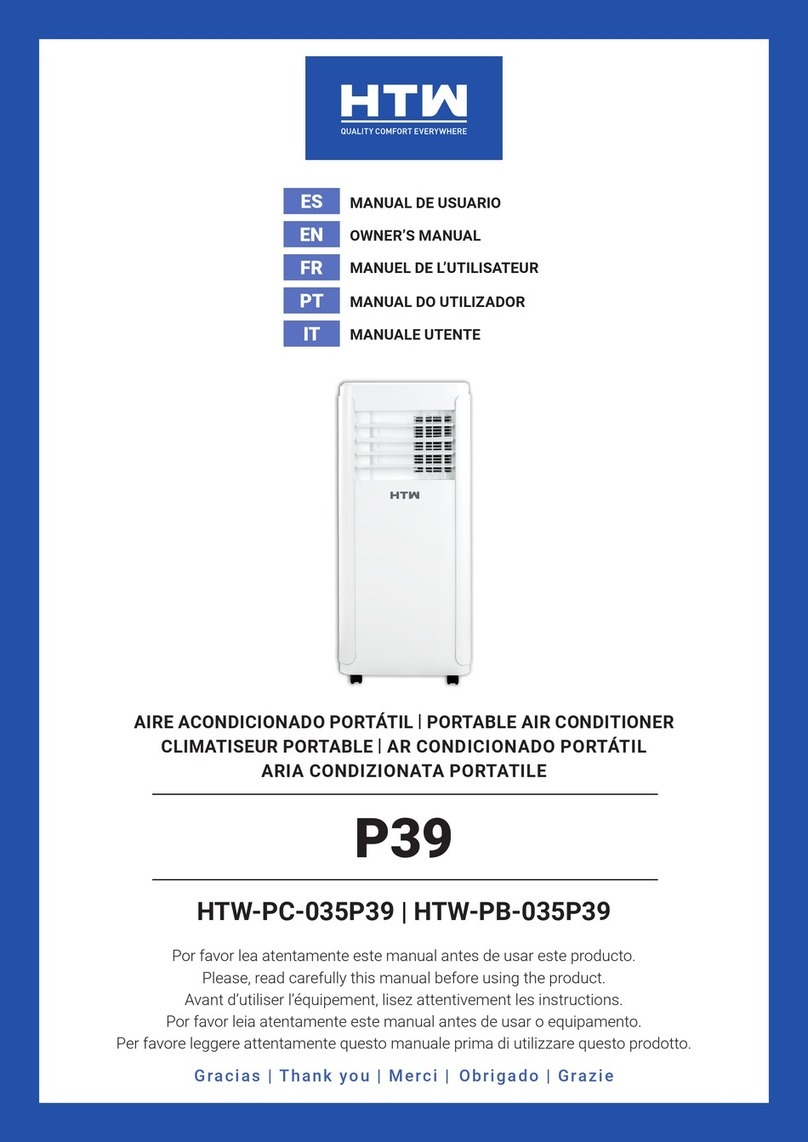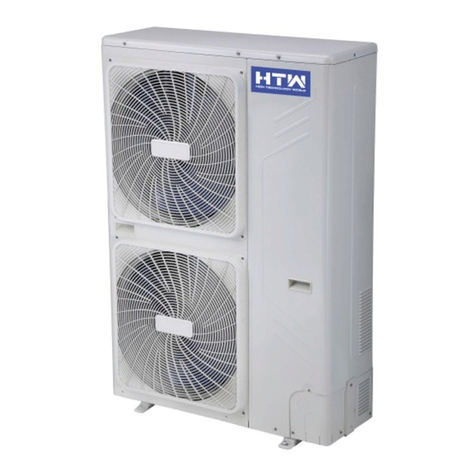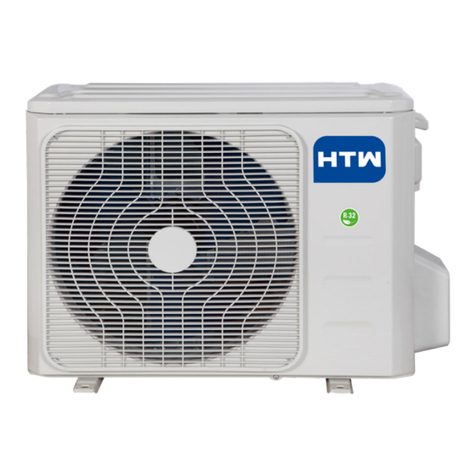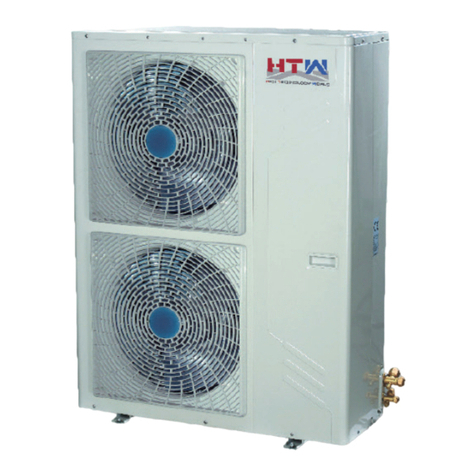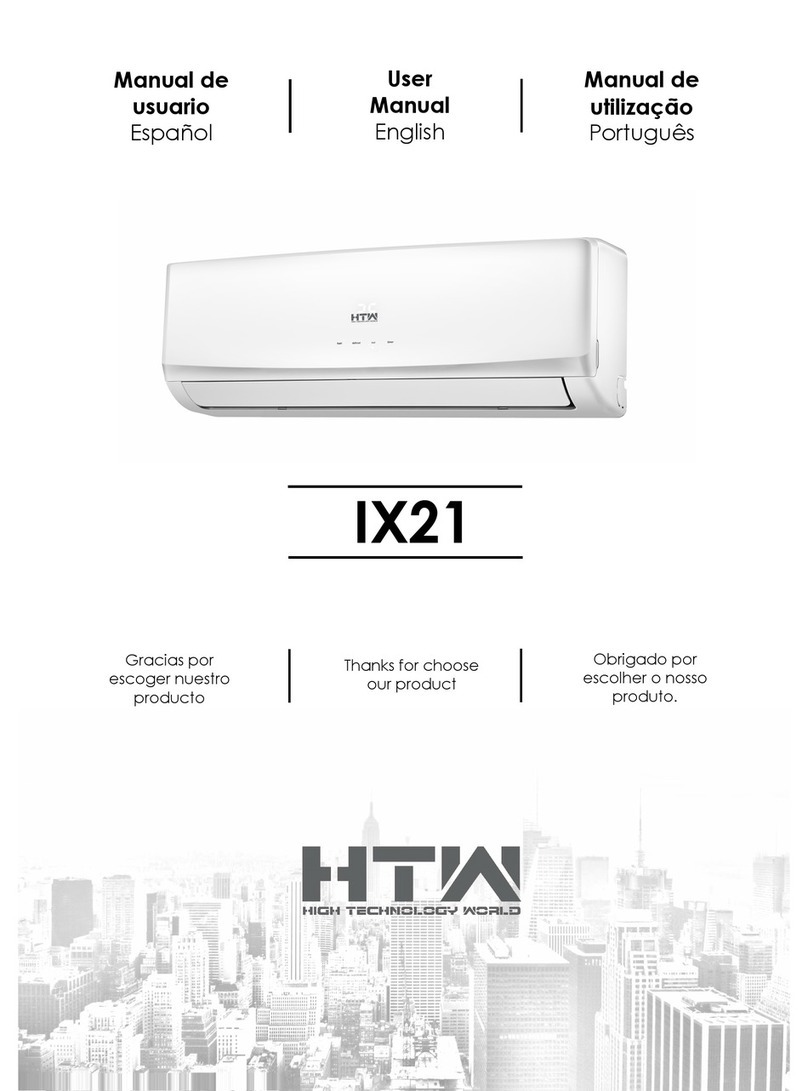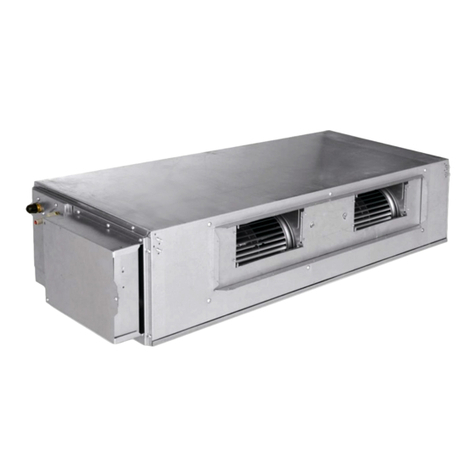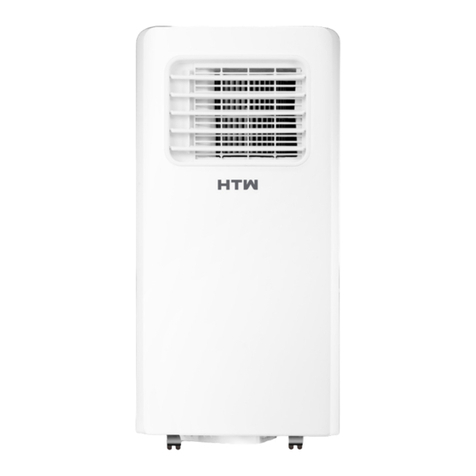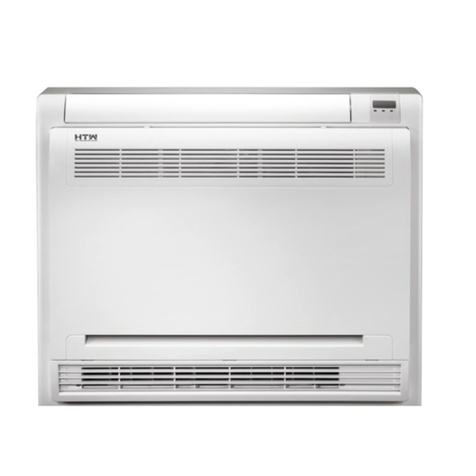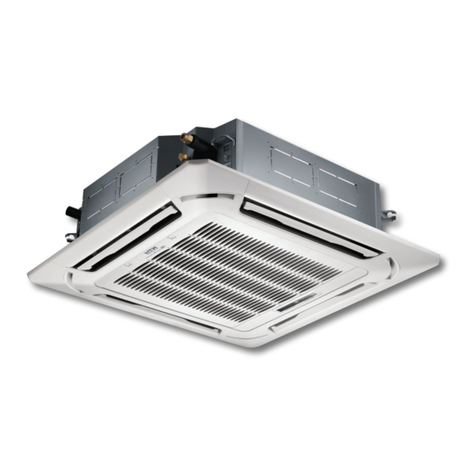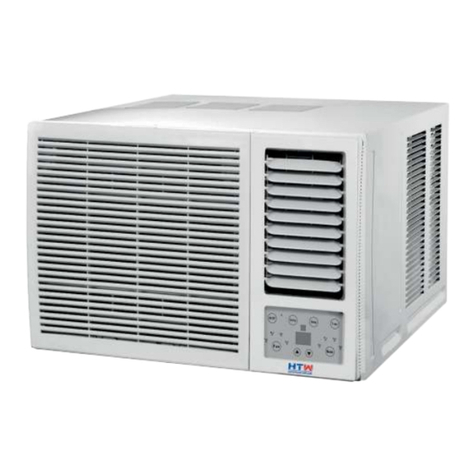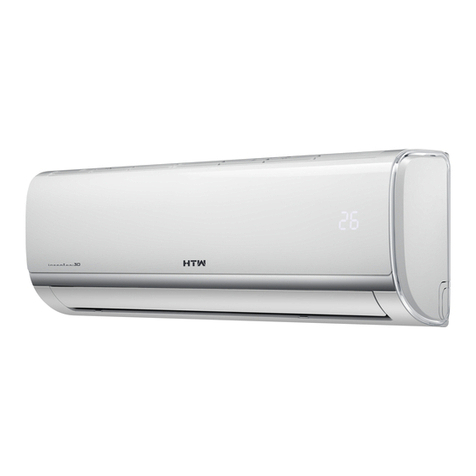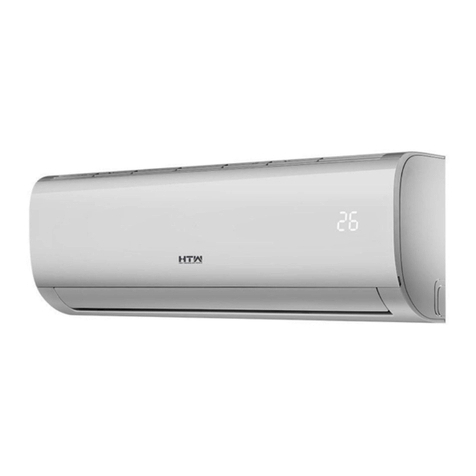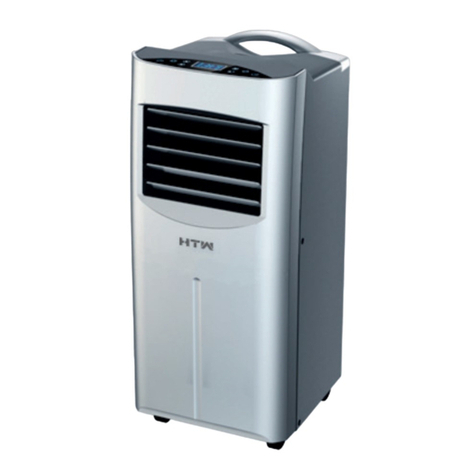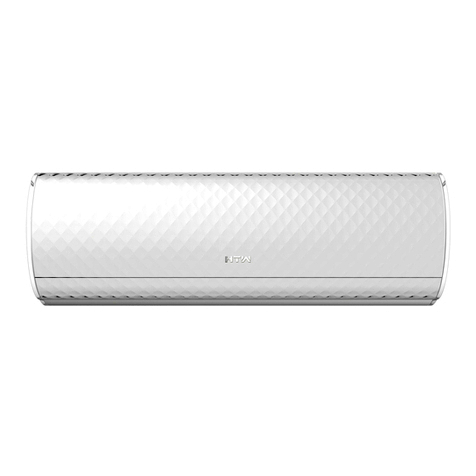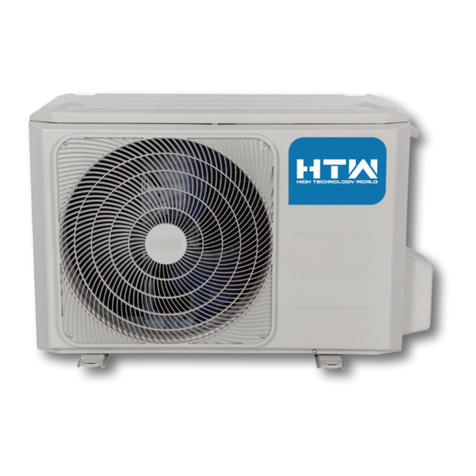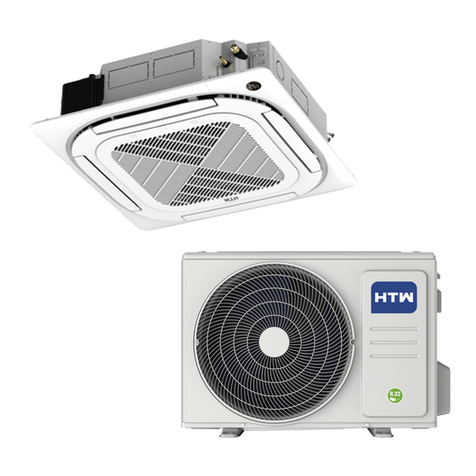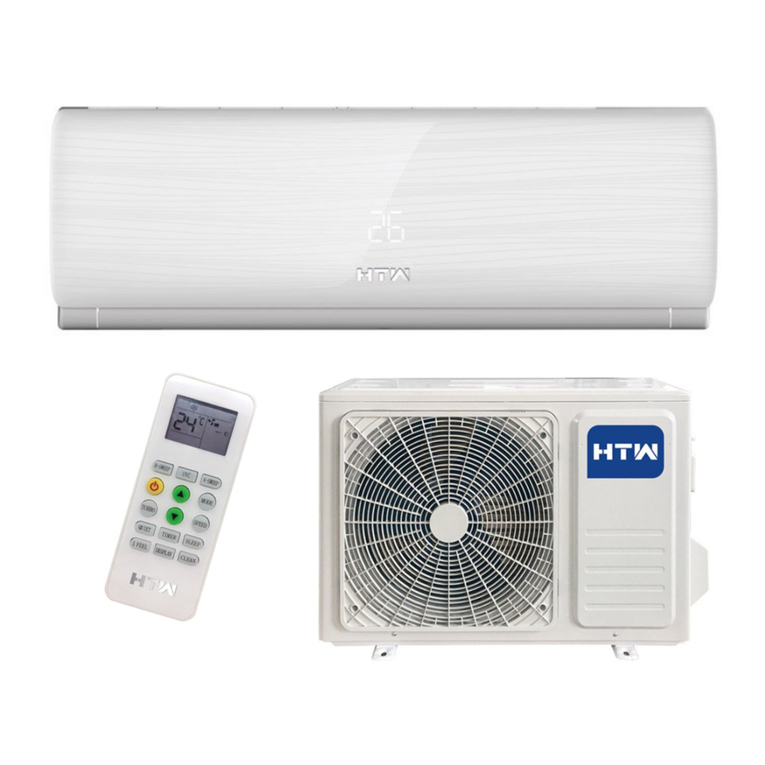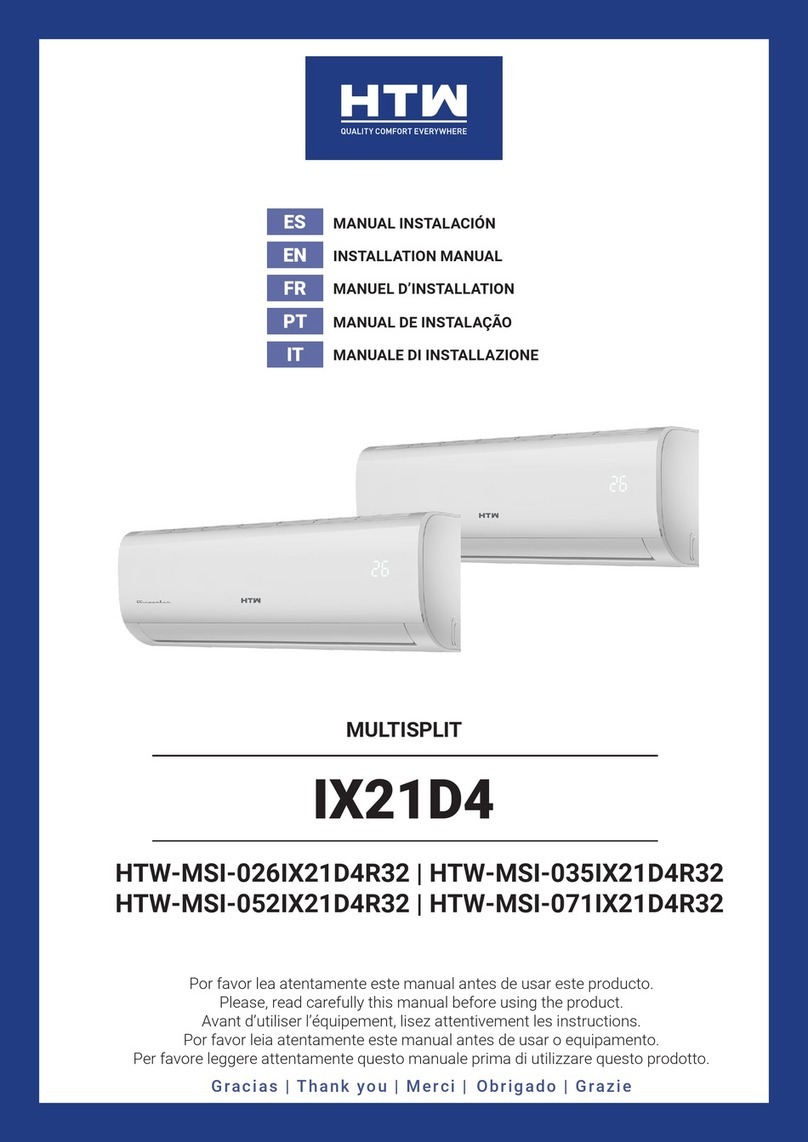
1. INFORMACIÓN DE SEGURIDAD
IMPORTANTE
Para evitar lesiones al usuario o a otras personas y daños a la
propiedad, siga al pie de la letra las siguientes instrucciones. Un
uso incorrecto o hacer caso omiso de estas instrucciones puede
dar lugar a daños o lesiones.
Las precauciones de seguridad indicadas se dividen en dos categorías
De cualquier manera, se debe leer detenidamente toda la información
de seguridad proporcionada.
ADVERTENCIA
Hacer caso omiso de una advertencia puede provocar
la muerte.
CUIDADO
Hacer caso omiso de una nota de "cuidado" puede
provocar lesiones o daños a los equipos.
ADVERTENCIA
No corte la alimentación manualmente durante el funcio-
namiento del acondicionador; de lo contrario, se pueden
provocar problemas de funcionamiento.
Pida al distribuidor que realice la instalación del acondicionador.
Una instalación incompleta llevada a cabo por sí mismo puede
dar como resultado pérdidas de agua, descargas eléctricas
o incendios.
Pida al distribuidor que realice las operaciones de mejora,
reparación y mantenimiento.
Operaciones de mejora, reparación o mantenimiento
incompletas llevadas a cabo por usted mismo podrían dar como
resultado pérdidas de agua, descargas eléctricas o incendios.
Para evitar descargas eléctricas, incendios, lesiones, o si
se detectan anomalías como olor a quemado, desconecte
el equipo y póngase en contacto con su distribuidor para
recibir instrucciones al respecto.
No permita que la unidad interior y el mando a distancia
se mojen.
Esto puede dar lugar a descargas eléctricas o a incendios.
Nunca pulse el botón del mando a distancia con objetos
puntiagudos duros.
El mando a distancia se puede dañar.
No utilice fusibles de repuesto con corriente nominal no
adecuada ni otros conductores al quemarse un fusible.
El uso de cables o conductores de cobre puede provocar daños
en la unidad o incendios.
La exposición prolongada al flujo de aire puede ser dañina
para la salud.
No introduzca dedos, varillas u otros objetos en la toma
o en la salida de aire.
La rotación del ventilador a alta velocidad puede provocar
lesiones.
Nunca use aerosoles inflamables como lacas, productos
en spray para el cabello o pinturas cerca de la unidad.
Esto puede dar lugar a incendios.
Nunca toque la salida del aire o las láminas horizontales
mientras la aleta oscilante está en funcionamiento.
Los dedos pueden quedar atrapados o se puede dañar la
unidad.
Nunca ponga objetos en la toma o en la salida del aire.
Cualquier objeto en contacto con el ventilador a alta velocidad
puede dar lugar a riesgos.
Nunca revise o realice el mantenimiento de la unidad por
sí mismo.
Pida a un técnico cualificado que realice estas operaciones.
No elimine este producto junto con los residuos urbanos no
clasificados. El equipo, al final de su vida útil, debe recoger-
se de forma selectiva y someterse al tratamiento pertinente.
Para evitar pérdidas de agua, póngase en contacto con su
distribuidor.
Cuando el sistema está instalado y funciona en una habitación
pequeña, es necesario mantener el agua dentro del límite es-
tablecido para evitar que se salga y comprometa la capacidad
de refrigeración.
Apague todos los calentadores que funcionan con
combustible, ventile la habitación y póngase en contacto
con el distribuidor que le ha vendido la unidad.
No use el acondicionador de aire hasta que un técnico
cualificado confirme la efectiva reparación de la parte en la que
se ha producido la pérdida.
CUIDADO
No use el acondicionador para fines distintos de aquellos
para los que se ha concebido.
Para evitar daños, no use la unidad para enfriar instrumentos
de precisión, alimentos, plantas, animales u obras de arte.
Antes de efectuar la limpieza, asegúrese de apagar la
unidad mediante el interruptor o desconectando el cable
de alimentación.
De lo contrario, se pueden producir descargas eléctricas
y lesiones.
Para evitar descargas eléctricas o incendios, asegúrese
de que el detector de fugas a tierra esté instalado.
Asegúrese de que el acondicionador esté puesto a tierra.
Para evitar descargas eléctricas, asegúrese de que la unidad
esté puesta a tierra, de que el conductor de tierra no esté
conectado a los tubos del gas o del agua, ni a pararrayos
o a conductores de las líneas telefónicas.
Para evitar lesiones, no quite el resguardo del ventilador
de la unidad exterior.
No toque el acondicionador con las manos mojadas.
Se pueden producir descargas eléctricas.
No toque las aletas del intercambiador de calor.
Estas aletas son afiladas por lo que pueden provocar lesiones
por corte.
No ponga objetos bajo la unidad interior que puedan
dañarse con la humedad.
Se puede formar condensación si la humedad es de más del
80 %, si la salida de desagüe está obstruida o si el filtro está
contaminado.
Tras un uso prolongado, revise la unidad y sus accesorios
para comprobar que no presenten daños.
En caso de daños, la unidad misma puede dar lugar a riesgos
de lesión.
Para evitar carencia de oxígeno, ventile la habitación
suficientemente si se está usando un equipo con
quemador junto con el acondicionador.
Disponga la manguera de desagüe de manera tal que se
asegure un desagüe fluido y sin obstrucciones.
Un desagüe incompleto supone el riesgo de que las
construcciones, muebles, etc. se mojen.
Nunca toque las partes internas del mando.
No quite el panel frontal. El contacto con algunas partes
internas puede ser peligroso y pueden producirse problemas
en el equipo.
Nunca exponga al flujo de aire directo a niños pequeños,
plantas o animales.
Se pueden tener efectos adversos en niños pequeños,
animales y plantas.
No permita que los niños monten la unidad exterior ni
ponga objetos sobre ella.
Las posibles caídas o vuelcos pueden causar lesiones.
No haga funcionar el acondicionador si se ha fumigado la
habitación con insecticidas.
